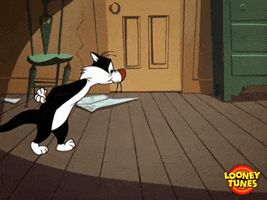As an aside from the imminent long awaited Supreme Court (HD) decision on Go or no Go I like to again draw your attention to the somewhat complex issues with land use in the environs of Nunasvaara South. To fill you in the present Swedish Government established a Reindeer land committe (Renmarkskommitten) in 2022 to look into the until then prevailing , and to my mind PC, view that the reindeer owning Sami represented by the Sami co-ops, ie Talma in our case, were the original owners of the land from the Scandes mountain chain in the northwest up to the village of Vittangi in the southeast. Essentially all of the upper reaches of the Torne river and its north western catchment area.
Moreover, the Sami claim historical status as Aboriginal land owners including hunting and fishing rights on all 'their' land in a separate court case versus the Kingdom of Sweden. Like some independent Lordly fiefdom in ancient Scotland.
They have also promoted themselves to the UN status of 'native original population' or 'ur people' of the Arctic, equivalent to native Indians in North and South America, Eskimos in Greenland and indeed Aboriginies as well as Maoris of the South.
However, the Reindeer land Committe asked historians from the Universities in Luleå and Umeå to look into the Sami claims of long time squatting on this land since the ice retreated, anointing them to their rightful place and standing as overlords of all of their lands and possessions.
A report was submitted to the Swedish Government in August 2023.
And lo and behold the researchers, that were not beholden to an agenda of native populism, found that yes, there was historical evidence for competing fishing, hunting and farming use of the land claimed by settlers from the lower reaches of the Torne river valley.
Settlers that spoke Finnish and were a distinct population from the nomadic Sami population that speak a different language and differ culturally from the settler families.
The outpost of Vittangi was first settled by the Finnish speaking settlers in the wilderness 1674. By my forefathers that used to travel up and down the Torne river by boat many years before then. Hundreds of years before roads were built.
The Cultivation Border separating farming, hunting lands and fishing waters of the early Settler families from the nomadic Sami with their reindeer was drawn after consultation with my forefathers and the Sami. The lay of the land was communicated directly to the visiting Border commission.
Our own land is, until this day, notably located upstream and past, the bridge across the Torne river 15 km upstream of Vittangi.
The road to the mine site of Nunasvaara south goes over this bridge which is the only one for
miles upstream and downstream of the river and was constructed specifically to give direct access to the eastern banks where the river narrows.
The access road to Nunasvaara South mine site connects with the main road 395 between Vittangi and Svappavaara as mentioned in another posting.
We claim ownership to this land, in the overlap between Sami and Settler jurisdiction, and to mark this there stands, just here, at the nexus between the past and the future, a family hunting and fishing lodge, within a shot by bow and arrow from Nunasvaara South on the opposite side of the Torne river just upstream of the bridge.
See map below of Northern part of Sweden and Norway bisected by the geographical demarcations of the different Sami co-ops. Also find the Cultivation border indicated by the red line running across these demarcations.
I have tried to mark the location of Vittangi with a V at the confluence of Vittangi and Torne rivers downstream of this historical Border.
View attachment 58528
As a concession to the Talma reindeer lords they were granted the grace by the Border Commission to allow their reindeer to graze on the forested banks of the Torne river down stream of the Cultivation border up to the village of Vittangi, but restricted to the winter months between November and April.
And this is the focal point where the SC is finding itself adjudicating the merits of the Talma v Talga claim to the use of this valuable land. Talmas reindeer are restricted, by many hundred year of practice and law, to remain in this area only during the winter months grazing lichen and other vegetation. This area now just so happens to overlap with one of the richest finds of natural graphite. And the mining in the off season for reindeer grazing has been raised by Talga as a solution for multi use of this contested land as you know.
Finally another thought that struck me as a Botanist. What if the reindeer actually are grazing indicriminately on both rare plant, fungi and lichen in this area that the local environmentalists and the Swedish Nature Protection Agency claim are extremely worthy of protection?
That would be a very paradoxical situation pitting the over grazing greedy reindeer and their overlords versus the local environmentalist concerned with protecting fragile flora and fungi against the threats from the ill effects of both mining AND industrial agriculture, in this case reindeer slaughtered for their meat.
My solution, to resolve this brewing dispute. Ban reindeer from this area year around, in the process taking out Talma and their overlords out of the equation and for Talga to keep up the dialogue with the local concerned greenies to protect the very valuable Smaller Liverwort and Narrow footed Tooth fungi. Trust me. I kid you not.







